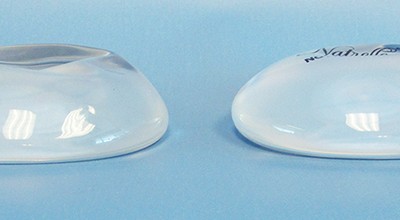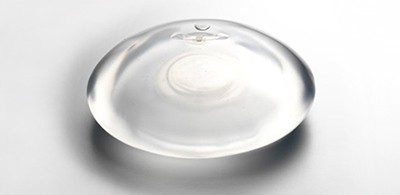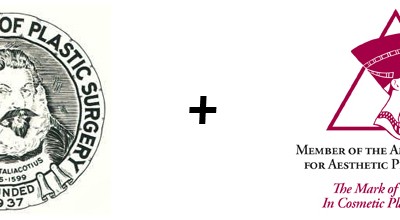
Safety of Silicone Gel Breast Implants
In the United States during the 1980s and early 1990s there were a number of reports of possible connective tissue disorders and cancers among women with breast implants. Numerous women won lawsuits brought against breast implant manufacturers, and growing concerns regarding the safety of silicone gel breast implants prompted the FDA to re-evaluate whether these devices should be available on the market. The FDA ultimately decided that there was inadequate long-term safety data for silicone breast implants, and that more information was necessary. Silicone gel breast implants were temporarily taken off the market in January 1992. A short time later the FDA allowed the restricted use of silicone gel implants for breast reconstruction under very strict clinical study guidelines. It is important to note that these safety concerns existed only here in the US; silicone gel breast implants were being utilized in other countries worldwide without these concerns. As a result of these safety concerns, and prompted by the government, several agencies gathered large amounts of data to analyze whether silicone gel-filled breast implants truly caused disease or other health problems. Listed below is a summary of the major scientific evaluations and the subsequent conclusions regarding silicone breast implant safety.
Silicone Gel Breast Implants – The Report of the Independent Review Group, 1998 (UK)
In response to concerns about a possible link between silicone gel breast implants and health problems, the British Minister of Health asked the Chief Medical Officer to review of the use of silicone gel breast implants in the United Kingdom. The Chief Medical Officer formed an Independent Review Group (IRG); members were selected for their knowledge, independent views, and their lack of any invested interest in the conclusions. The group collected and reviewed evidence from experts in the United Kingdom and overseas. In the end, the IRG concluded that silicone gel breast implants did not cause any health problems.
The IRG study reached the following conclusions:
1. There is no evidence for an abnormal immune response to silicone from breast implants in tissue.
2. There is no epidemiological evidence for any link between silicone gel breast implants and any established connective tissue disease. If there is a risk of connective tissue disease, it is too small to be quantified.
3. There is no evidence to support the existence of atypical connective tissue disease or undefined conditions such as ‘silicone poisoning’. It is possible that other conditions such as low grade chronic infection may account for some of the non-specific illnesses noted in some women with silicone gel breast implants.
4. There is no unusual toxic reaction; the overall biological reaction to silicone is consistent with conventional forms of response to foreign materials.
5. There is no evidence that children born to women with breast implants are at increased risk of connective tissue disease.
6. The IRG recognized that there were issues, such as the precise incidence of implant rupture, where the scientific data were incomplete so that specific conclusions could not be drawn.
Institute of Medicine, 1999 (USA)
more to come
National Cancer Institute, October 2000 (USA)
Breast Cancer Following Augmentation Mammoplasty (United States)
Louise A. Brinton, Jay H. Lubin, Mary Cay Burich, Theodore Colton, S. Lori Brown, and Robert N. Hoover.
Cancer Causes and Control, Vol.11(9):819-827.
In 1992, because of questions regarding the long-term safety of silicone gel breast implants, Congress directed the National Institutes of Health (NIH) to undertake a large study to evaluate the health risks of the implants. The National Cancer Institute (NCI) subsequently conducted one of the largest follow-up studies on the long-term health effects of silicone breast implants. The purpose of the NCI study was to evaluate the effect of breast implants on the risk of developing breast cancer, developing other forms of cancer, developing connective tissue disorders, and death. To ensure scientific objectivity the study was designed and funded entirely by the government. Scientific oversight was provided by the NCI’s Board of Scientific Counselors and its Breast Implant Study Advisory Panel.
This study included nearly 13,500 women who had breast implant surgery for cosmetic reasons between 1962 and 1989. About 4000 women of similar age who had some other type of facial or abdominal plastic surgery were selected as the control group. Both groups of women were selected from 18 plastic surgery practices in Atlanta, Ga.; Birmingham, Ala.; Charlotte, N.C.; Miami and Orlando, Fla.; and Washington, D.C.
The NCI study reviewed the women’s medical records and collected information about the surgical procedure, the type of breast implant they received, any complications that occurred, and other factors that might affect health status.
Patients who were located were asked to complete a questionnaire to collect additional information. The questionnaire asked whether they had subsequent plastic surgery, inquired about lifestyle factors that could affect their health, and included follow-up on potential short-term complications (rupture) and longer-term complications (diagnosis of cancer or connective tissue diseases).
Physical exams were not performed on the patients, but attempts were made to confirm the patient reports of cancer and connective tissue disease by further reviewing the medical records made by the physicians who diagnosed and/or treated these diseases. For patients who had died, death certificates were used to verify the cause of death.
About 80% of the original 13,500 implant patients and 4,000 patient controls were successfully located; and about 70% of those women completed the questionnaires. Among the women with breast implants, 49.7% received silicone gel implants, 34.1% received double lumen implants, 12.2% received saline-filled implants, 0.1% received other types of implants, and 3.8% received an unspecified type of breast implant.
Important features of this study, that set it apart from previous studies, included the large number of women evaluated, the control group used, the detailed and extensive collection of information, and the length of follow-up.
NCI Study results:
The first part of the NCI’s analysis, Breast Cancer Following Augmentation Mammoplasty, evaluated the effect of breast implants on the risk of developing breast cancer. This study found no association between breast implants and the subsequent risk of breast cancer, and the risk did not depend upon the type of breast implant used. The NCI study showed that women with breast implants did have a smaller percentage of non-invasive early stage breast cancer when compared with controls, and that there was a somewhat later detection of cancer in women with implants. But, the differences were not statistically significant, and there was no difference in breast cancer mortality between the implant and control group.
Further findings of the NCI analysis were published between 2001 and 2006.
National Cancer Institute, 2004 (USA)
more to come
NEXT TOPIC: Anatomically Shaped Highly Cohesive Silicone Gel Breast Implant
What is the Gel-to-Shell Fill Volume Ratio?
Each round silicone gel-filled breast implant is comprised of a silicone elastomer shell which contains the silicone gel filling. Silicone gel breast implants are filled by the manufacturer with a moderately cohesive (responsive) silicone gel. If you look carefully at...
How Firm is a Saline Breast Implant?
During the consultation today, a patient asked me, "Aren't saline implants harder?" Well, it actually depends. Let me start by saying that if you have ever held a saline implant and a silicone gel implant side-by-side, you know that they feel completely different, and...
Why is a board certified plastic surgeon important for my breast augmentation?
I recently saw a woman in consultation for a failed saline breast implant. She had her breast augmentation performed seven years earlier by a surgeon who advertises like a plastic surgeon, but is not board certified in plastic surgery. And as far as I am aware, has...



